Flying Low - 1961-1966 Ford Thunderbird
Ford's amazing Thunderbirds of the 1961-1966 model years
09/23/2018
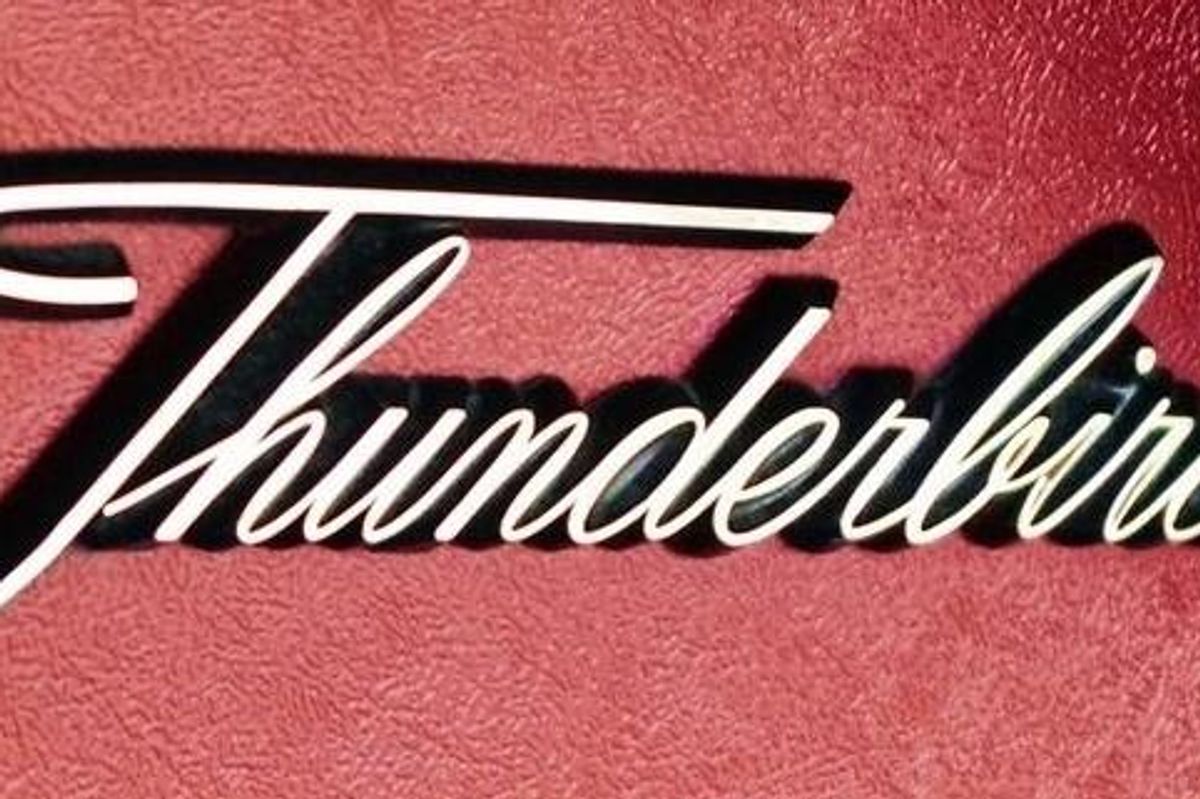

Sleek. No other word more accurately describes the shape of the Thunderbirds that Ford created for the 1961 to 1966 model years, although other adjectives such as "striking," "alluring," "fascinating" and "sensational" certainly do apply as well. These are truly fantastic automobiles with a distinct style.
The 1960s dawned with renewed vigor, excitement and hope, and the new Thunderbirds tapped into that positive atmosphere like no other car at the time. They reflected the public's perception of renewal and a look towards the future. This perception was surely strengthened when a new 1961 Thunderbird took part in John F. Kennedy's inaugural parade, then further enhanced a few months later when it paced the field at the Indianapolis 500.
As successful and attractive as the 1958-'60 Thunderbirds were, upon the introduction of the redesigned 1961 models, the "squarebirds" instantly looked dated. The new 1961 models were within an inch the same size as the squarebirds, but they looked lower, longer and wider, with an exciting-looking body featuring all sorts of jet aircraft styling cues. They simply looked fast even when they were standing still.
Known as the third-generation models, the 1961-'66 Thunderbirds have a following all their own, which is usually split into two groups: the sporty 1961-'63 models and the more formal-looking 1964-'66 versions. Under their exterior skins, however, they were fundamentally identical, yet with each year's models sporting new subtle unique details, each has its own admirers.

1961-'66 THUNDERBIRD PRODUCTION
* Includes Landau models; no breakout available

1961
FROM THE FAR REACHES OF ITS POINTED FRONT FENDERS rearward to its jet-inspired round taillamps, the profile of the new Thunderbird is spear-like in its form. And just like that man-made tool, it slices through the air like few automobiles have even done before--it begs to be driven.
Stylistically, it has a shape that truly is unmistakably Thunderbird; everything about its design is purposeful. Its lissome stance is sports-car low, and with just the right amount of front and rear overhang, its proportions are near perfect--a veritable masterpiece of design.
Some of this model's many unique features include a grille with a horizontal lattice pattern, two long, raised ridges on each side of the hood scoop, a Thunderbird emblem on the hood's leading edge, door handles that were part of the side trim, four distinctive, thin horizontal metal strips on the quarter panel, and a flap in the rear bumper that concealed the gas tank filler.
Notable options were the famous Swing-Away steering column for an extra $25.10, Equa-Lock differential for $38.60 and Tu-tone paint for $25.80.
All engines were V-8s displacing 390 cubic inches, and there were four stages of tune available. The ultimate was the Q Code, which sported three two-barrel carburetors and a 10.6:1 compression ratio that allowed it to develop a muscular 401 horsepower and 430-lb.ft. of torque.
1962
THE BODY REMAINED THE SAME, EXCEPT NOW THERE WERE FOUR distinct models to be had: the standard Hardtop, the formal-looking Landau Hardtop, Convertible and the Sports Roadster.
Up front, the grille was changed to a lace-type design incorporating small squares; gone were the raised ridges on the hood, a Thunderbird script was now placed on the leading edge of the front fenders and the decorative quarter panel trim was changed to three rectangular bars that simulated a jet's exhaust. The Swing-Away steering column was now standard.
The new Landau Hardtop model gave the Thunderbird a more upscale appearance, with its black leather-grained vinyl top and S-shape landau bars. But the model that stole the show was the sexy Sports Roadster. With its fiberglass tonneau cover sporting twin headrests that matched the outline of the adjoining seats ahead of it, its appearance was that of an exotic high-performance sports car. The tonneau cover was removable to permit use of the rear seats below.
All Sport Roadsters were equipped with Kelsey-Hayes chromed wire wheels, which did not allow use of the rear fender skirts due to clearance issues.
Engine choice was now down to two: the base 300hp, 390-cu.in. V-8 and the tri-power-equipped version that put out 340hp.
One new interesting feature was a small brass plate that was to be affixed to the instrument panel with the buyer's name inscribed on it, yet not many cars were so fitted. And the remote-controlled driver's-side exterior mirror was now standard.
1963
FORD STYLISTS TWEAKED THE THUNDERBIRD'S EXTERIOR WITH A subtle reference to the old squarebirds by adding a similar-looking sculptured line down the side. Other changes that differentiated the '63 model from the two prior years were the addition of three decorative metal hash marks on the door, a new grille with an intricate vertical pattern, and a small chrome grille guard in the center. Other than those minor updates, plus the deletion of the "Thunderbird" script on the front fender, the 1963 model was essentially the same car.
Four models were available just as in 1962, with this being the last year for the Sports Roadster. There was also a Limited Edition Special Landau model honoring the Principality of Monaco; only 2,000 examples were built with each car fitted with a brass nameplate with the car's serial number inscribed on it. All were painted white with a maroon vinyl top and white leather interior.
Mechanically, an alternator replaced the old-style generator, the windshield wipers were now hydraulically operated via the power steering pump, and a mechanical hood latch replaced the old cable mechanism. Other changes included stylish metal-clad brake and accelerator pedals, courtesy lamps on the interior doors, and revised upholstery patterns; leather upholstery was an option. One of the most popular options was the new AM/FM push-button radio.
The base 390-cu.in. V-8 was unchanged and put out the same 300hp as before, as did the M-Code tri-power V-8 with its 340 horsepower rating; this was the last year that the six-barrel powerhouse was offered.
1964
THE FIRST MAJOR RESTYLE OF THE THIRD-generation Thunderbirds was introduced on the 1964 models, giving them a more formal, upscale appearance. With the body-length chrome strip running atop the fenders and doors now gone, the hood was raised to match the flattened fender tops, and standalone door handles were added. The headlamps, now trimmed with chrome bezels, were relocated towards the outer edge of the fenders, like most other cars of the day, and small bullet-shaped ornaments were added to the top of the front fenders. The hood scoop was now wider and a bit lower in profile, and individual letters spelling out "THUNDERBIRD" were fitted to the leading edge of the hood.
In the rear, wide rectangular taillamp assemblies replaced the signature round taillamps, with the trunk lid's shape mimicking the taillamp's "bowtie" outline. It was then capped off with a bumper surround that frames it all. In the center of each taillamp there's a Thunderbird emblem, and the name is spelled out in the center panel, just above the license plate.
The interior had some big changes too, with the primary change being the replacement of the three round gauges with a horizontal speedometer, and the ancillary gauges fitted within four small round balls. The Swing-Away steering column remained standard, but the bucket seats were given new contours that were slimmer looking. The top of the console between the seats was padded and seatbelts were now standard. Rear seat passengers now had the luxury of a center armrest with the seatbacks curving into the door, and the optional radio speaker was positioned at the top between the seat backs.
Engine choices were now down to one: the same 300hp four-barrel 390-cu.in. V-8 as the year before; the Cruise-O-Matic automatic transmission was unchanged, too, although larger 15-inch tires replaced the 14-inch tires of the previous three years.
1965
MINOR EXTERIOR DETAILS SEPARATED THE new 1965 models from the prior year's version, with the most obvious being the addition of stylized simulated fender vents aft of the front wheels. At the front of the hood, a Thunderbird insignia replaced the individual letters, and a redesigned insignia with a rectangle in the center was attached to the hardtop's pillar. The "Thunderbird" script was relocated to the far end of the quarter panel, and the previously optioned rear fender skirts were now standard. Another option offered for the first time were power-operated vent windows.
In the rear, the horizontal taillamps now incorporated six individual square lenses on each side, and were sequential in their operation. The small center panel between the taillamps now featured the Thunderbird emblem in place of its name being spelled out.
The interior remained essentially the same apart from some very minor changes, such as the metal trim surround on the brake and accelerator pedals, and the instrument panel was now trimmed in vinyl that had a ripple grain to it; Landau models were given walnut-grained trim. Another first was the optional reclining seat for the front passenger, and a vacuum-operated release for the trunk lid.
Power was provided by the identical 390-cu.in. V-8 as in 1964, and still with the same 300 horsepower. The Cruise-O-Matic automatic transmission was the same as well.
One new model this year was the Special Landau; a standard-looking hardtop model with what Ford called an Ember-Glo exterior finish, which was also applied to the instrument panel; only 4,500 examples of this bronze-colored model, with its parchment-colored vinyl top, were produced.
1966
BEING THE LAST YEAR OF THE THIRD-GENERATION SERIES MEANT CHANGES were few. Up front, the thick bumper that framed the grille was deleted, giving this model Thunderbird a cleaner, sharper appearance. The grille itself was of a new mesh design featuring little rectangles, and a flat decorative metal panel replaced the individual chrome headlamp bezels. The hood scoop was lower in height and had a sharper point to its shape.
The rear taillamp lenses appeared as a single lens, yet still functioned sequentially when the turn signal was activated. The previous small panel in the center was deleted, making the entire rear taillamp assembly look like one large single unit; the Thunderbird insignia in the center was redesigned as well. The "Thunderbird" script on the rear section of the quarter panel remained the same.
Although the seat upholstery pattern was changed, as it had been every year, for the most part nothing was really new. There were modified brake and accelerator pedals, and this was the first year that a stereo tape player was offered as an option. There was an overhead Safety Panel in the ceiling that incorporated warning lights such as "low fuel," "door ajar," and a seat belt reminder, and six-way power seats were now optional.
The big and welcome news was the addition of front disc brakes. Replacing the old-style drums were 11.87-inch-diameter ventilated discs with four-piston calipers.
For the first time, there were two different size V-8 engines available. The standard engine was the 390-cu.in. V-8, which now made 315 horsepower, but to compete with the popular muscle cars of the day, a 345hp big-block V-8 displacing 428 cubic inches could be had for only $64.77. The Cruise-O-Matic remained the sole transmission.
This was also the last year for a convertible model Thunderbird, at least until the retro-looking Thunderbird of 2002 came out.
The classic VW Beetle is probably the single most iconic car ever made. Regardless of where you go, you will see a VW Beetle somewhere on the road. While the uninitiated may think they are uncomfortable and twitchy, the truth is that the interior of a Bug is kind of like Dr. Who's Tardis: it is a lot bigger on the inside that it looks. That doesn’t mean every Beetle you hop into is comfortable - the seats are very simple in design, using a smattering of steel springs and horsehair padding.
Our 1973 standard Beetle had the original seats with the original covers, which were in surprisingly good shape considering they are 50 years old. In fact, this car was built in May 1973. The seats were serviceable for a casual driver, but you could feel the springs moving in your back and posterior. The driver side cover was decent but the passenger side lower had developed some cracks, so their days were numbered. The Bug already had a big bore 1834-cc with twin carbs and custom cam, along with a Freeway Flyer trans and the car had been lowered 1.5 inches, so the interior needed some resto-modding to match. We picked up the phone and called TMI Products to see what they had to offer, and much to our surprise, the answer was quite a bit.
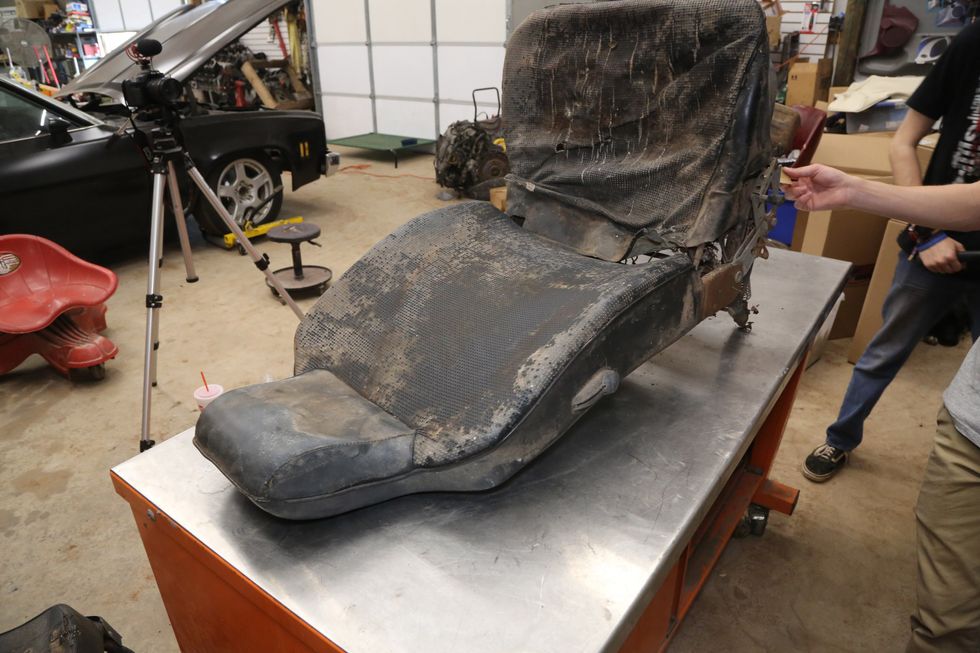
We expected a few stock patterns, and maybe a couple of ready-made custom layouts. Instead, we had a world of colors and patterns to choose from. This really opened the door to fantasy land, and in the end, we settled on a really beautiful turquoise houndstooth center fabric with a cream vinyl outer. This design was carried throughout the interior- front seats, rears, and door panels. This isn’t something TMI did special for us; this is how they operate, and it elevated the interior from stock to striking. Along with the covers, we also ordered a set of new seat foams, which allow you to ditch the stiff uncomfortable horsehair pads.
Once we had the covers off, we saw that these seats had been “customized” at some point with some cardboard over the springs to stiffen the seats. The original padding was quite stiff and had no give left. We removed all of it in favor of the new foams from TMI, which add much needed compliance to the cushions. There are a couple unique aspects of the VW seats. Instead of hog rings, the buckets use sharp metal tabs to pierce the upholstery. Because of this, you need some listing wire. The new covers do not come with this, but the original wire should be reusable if it is not badly rusted. If it is too far gone or missing, a little strip of bailing wire is a suitable replacement. The covers also use a drawstring on the bottom cushion to pull it tight. This is tied to either side of the frame.

We ran into a big problem on our seats when we took them apart, however. This being our first VW Bug, we were not aware that VW seats changed quite a bit and that they are often swapped around. We ordered covers for our '74 Beetle, and when we were ready to install the seat back covers, the new foams didn’t make any sense of how they fit. We called TMI tech support and sent some pics. Turns out we had 1973 seats; in fact, the car was a '73, but titled as a '74. The DMV must have made a typo, as the VIN matches. '73 Volkswagen seat backs are a one-year only, and we had covers for 1974-'76 seats. Luckily, we were able to find a set of '74 seat backs, which will swap over to the '73 lower frame, so crisis averted. Let this be a warning to you: before you order seat covers for a Beetle, check to make sure you have the right year. It was not something we thought to do, and was a clerical error on the vehicle’s title - even the guy we bought the car from told us it was a '74, so understand that you don’t know what you don’t know sometimes.
Installing the covers was a simple process. Each one takes about 20-30 minutes per section (back and lower), and we had both seats done in about 2-3 hours, all told. The finished seats shown here are without the plastic trim that they should have. One side on each of our seats had broken plastic trim, which we need to replace. That will be done later when we replace the dash and all the interior plastic trim parts at once. The new seats are much more comfortable and they look incredible inside the VW. They look great, and our backs and backsides appreciate the change.
Photo: Jefferson Bryant
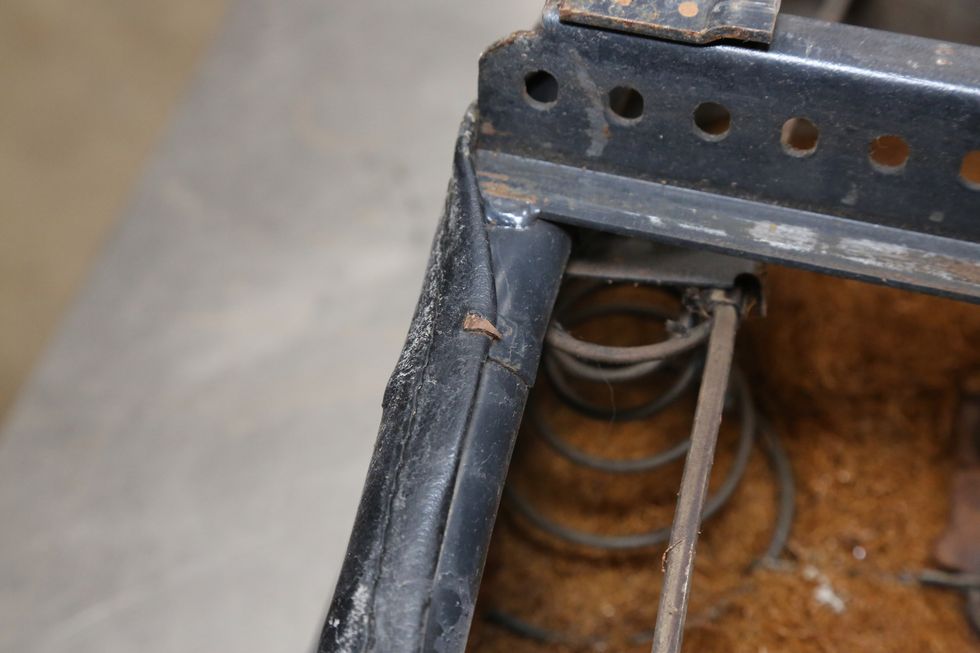

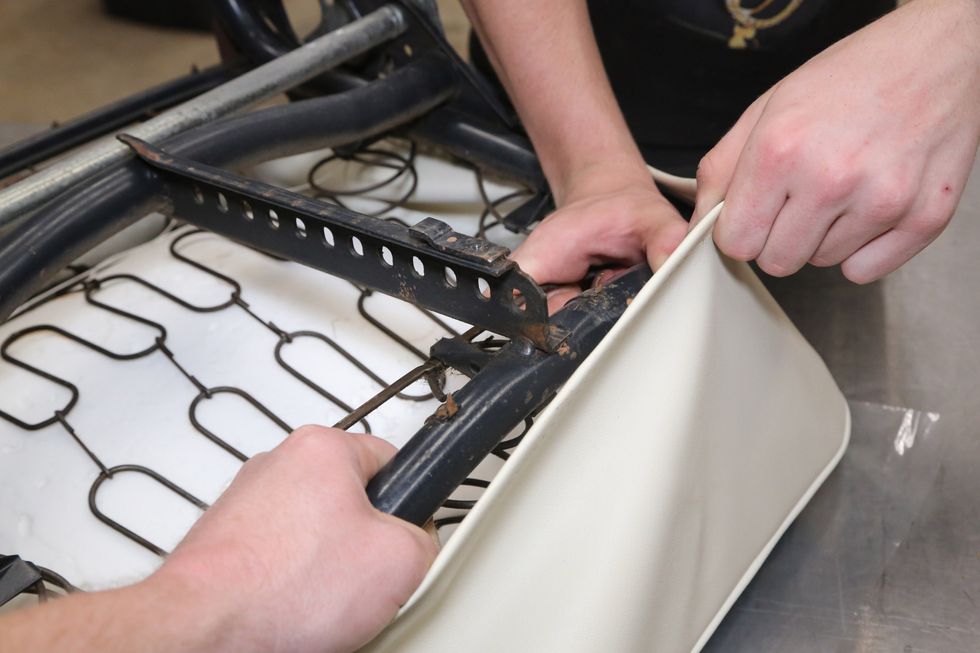



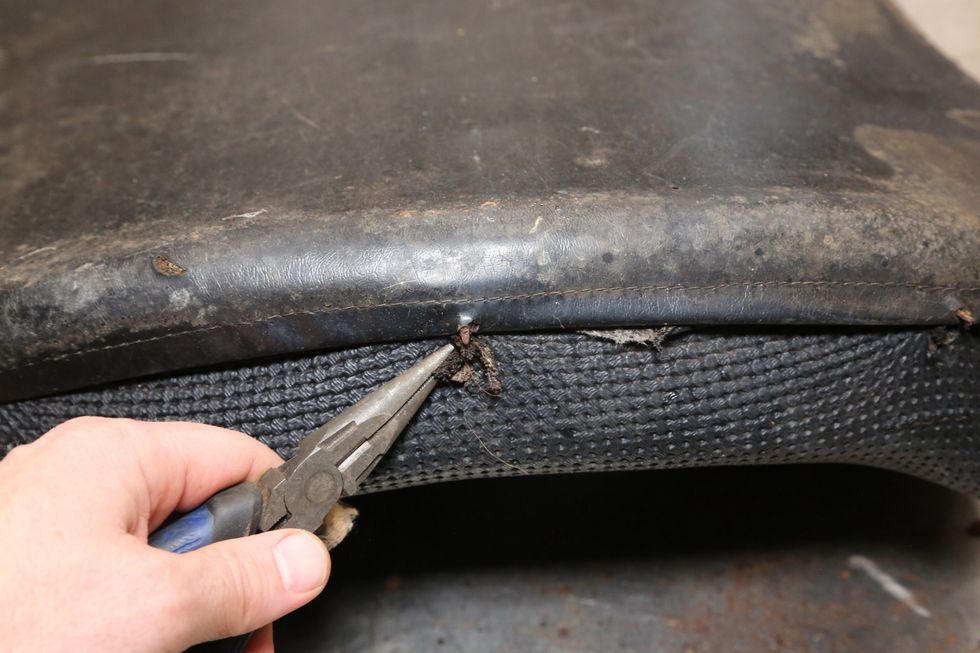
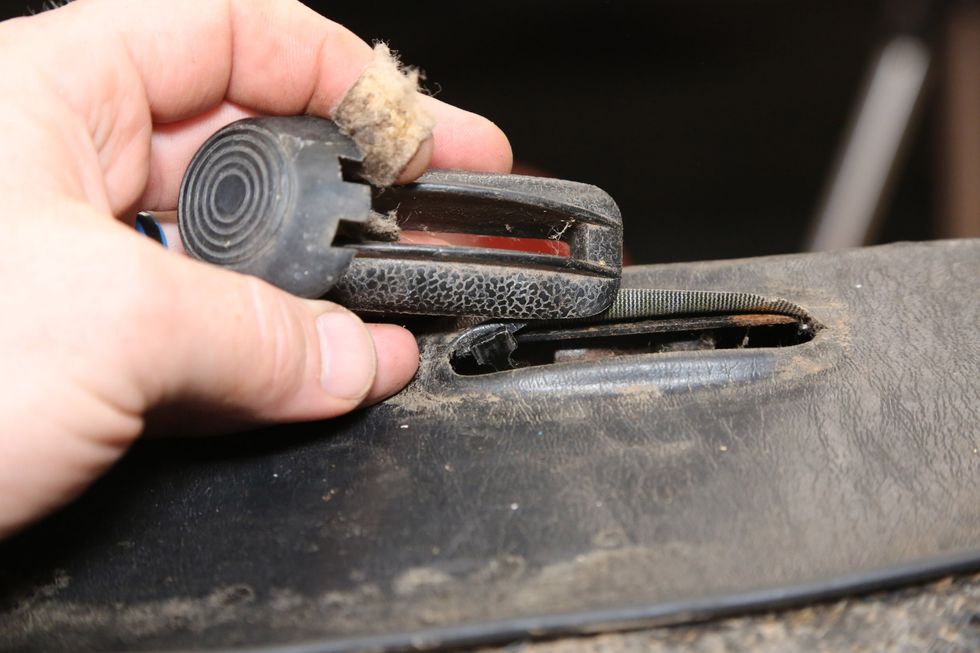



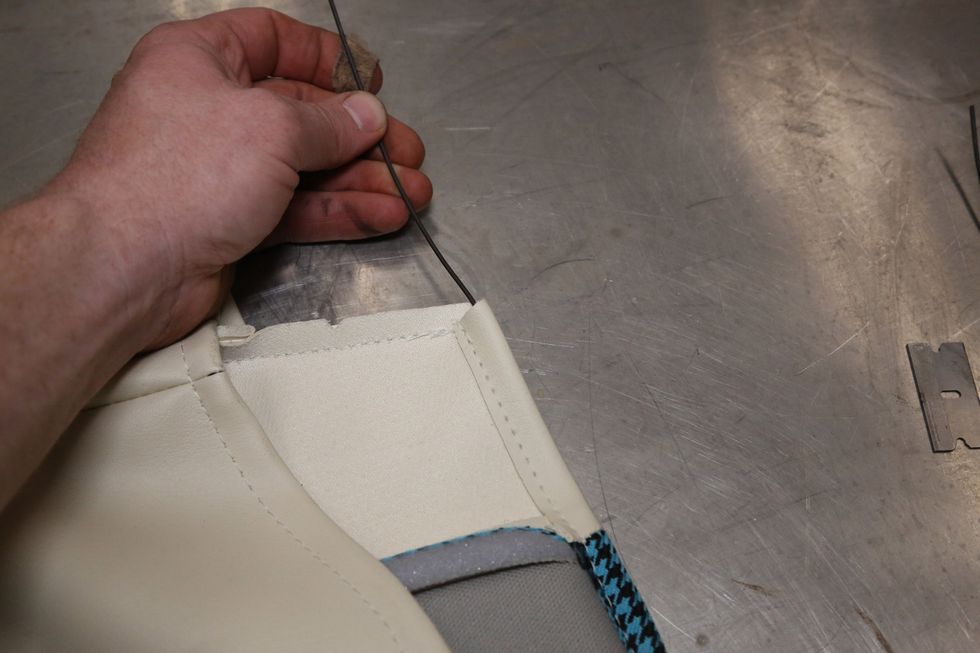


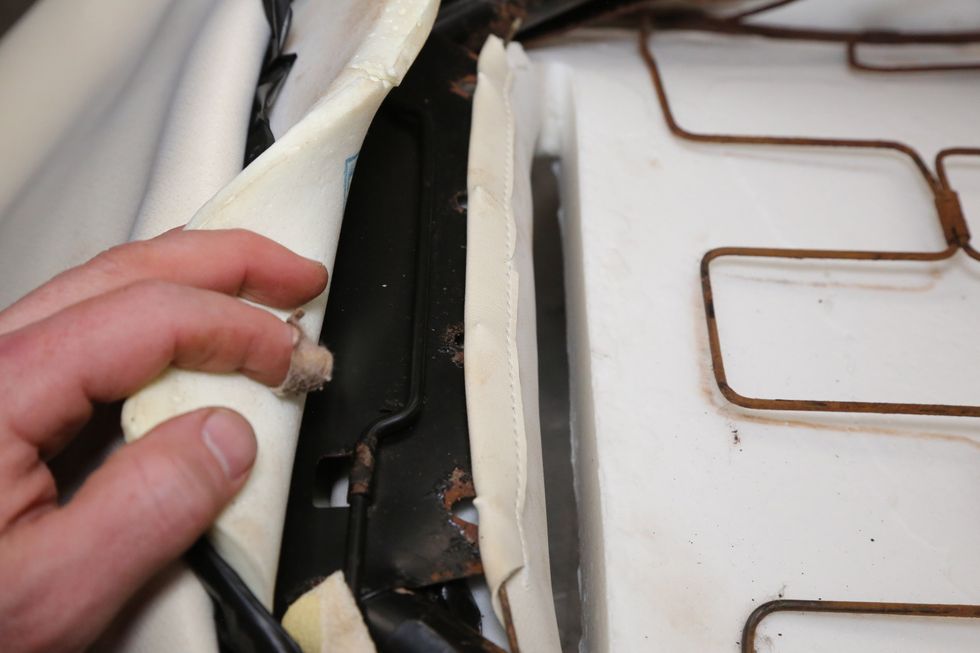
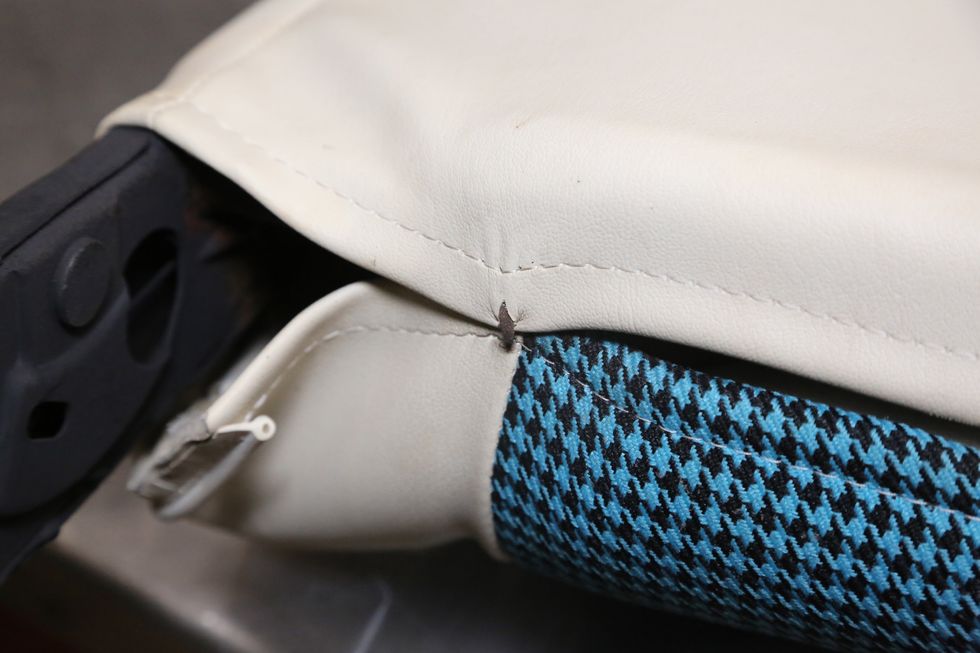


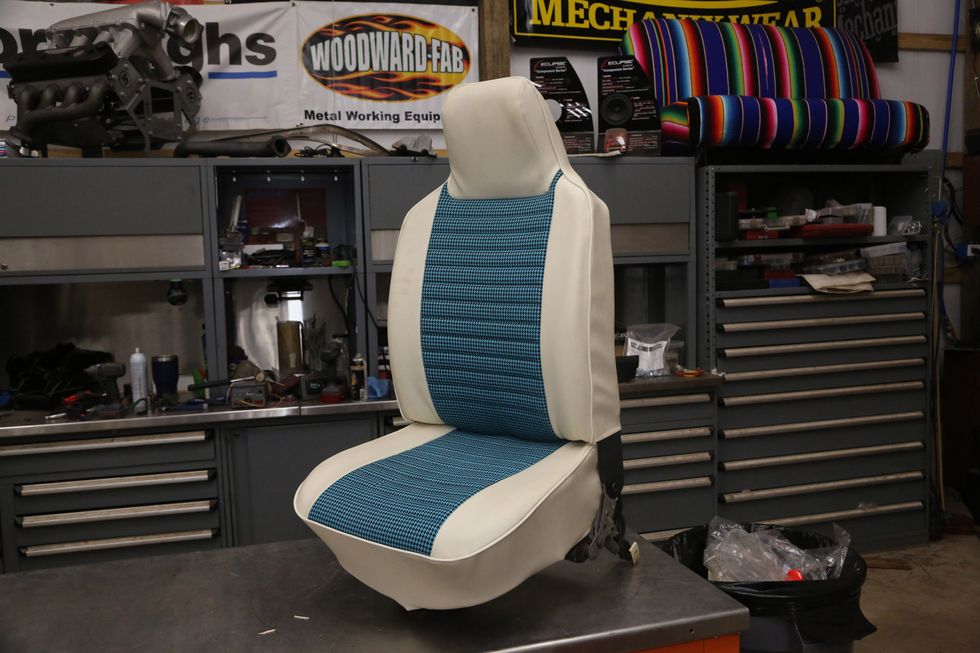
TMI Products •(888) 460-0640 • tmiproducts.com
“Gee, another iron small-block Chevy block? That’s hardly news.”
If you are an aggressively jaded LS engine enthusiast, this is probably not ground-breaking or exciting information. But despite inroads by the LS family, the small-block Chevy lovers of the world are not yet ready to give up on their venerated engine. It’s no secret that despite the bajillion small-blocks that Chevrolet produced over the decades that suitable cores for the popular small-block are disappearing at a prodigious rate. Of those survivors, optimal candidates for a performance build are becoming harder to find. Try to locate an affordable standard bore, 2-bolt 400 block today. If you do, the owner will want serious coin for a crusty casting.
But now there’s another alternative. Summit Racing recognized this shortfall and along with the BluePrint engine people stepped up for brand new tooling for a series of iron blocks. Just as importantly, the quality of the casting and machine work is impressive. The partners sought out a reputable casting facility in Germany to do the heavy lifting while the CNC machine work is finished here in the USA. So yes, the blocks originate from overseas, but these castings cross the Atlantic, not the Pacific.

Enough generalities. For small-block connoisseurs, the allure is in the details. Summit labels this new block the Street, Performance, Competition (SPC). The blocks are offered with a choice of two bore diameters of 4.00- or 4.120-inches. Plus you have the option of either a traditional two-piece rear main seal or the later one-piece version. Finally, the larger bore blocks are available in either the 350 main journal diameter or the larger 400ci version. Summit is considering also offering finished honed blocks as another option.
But this new SPC piece is not merely a duplicate of an earlier factory block. Right off, all blocks are cast using a stronger Class 35 iron alloy and employ nodular iron main caps. Like their production cousins, the center three main caps are attached with four bolts with 7/16-inch inners and smaller 3/8-inch versions for the splayed outer bolts that Summit’s Brian Nutter tells us the outer bolts are there mainly to limit lateral cap movement but also add additional bulkhead strength.
A critical point is that this block has been upgraded to priority main oiling. Production small-blocks lube the mains and rods only after first feeding the lifters. The addition of a dedicated main oil galley pushes oil directly to the mains to ensure the lower end is properly lubricated.
The deck height on these new blocks is shorter at 9.00 inches mainly because most aftermarket pistons are designed around this deck height. To improve head gasket sealing, the deck thickness is an impressive 0.600-inch and all the cylinder head bolt holes are blind. This means the head bolt holes do not intrude into the water jacket.

Speaking of coolant flow through the block, the block designers invested significant effort into improving coolant flow. The cylinder walls are siamesed which means the cylinder walls connect at the midpoint while increasing the volume around the tops of the cylinders by pulling the lifter valley walls inboard. This can be easily spotted by the pushrod clearance radius cuts made into the lifter valley walls. There are also pipe threads cut into the all main lubrication galleys to accommodate ¼-inch NPT plugs.
The cylinder walls are also strengthened. The blocks can accommodate up to a 4.185-inch bore diameter and still maintain a minimum wall thickness of 0.220-inch especially around the thrust surfaces. The as-delivered bore size for the 4.00-inch bore versions is actually 3.995-inch while the larger bores are at 4.120-inch to allow for honing to the standard diameters for piston clearance.
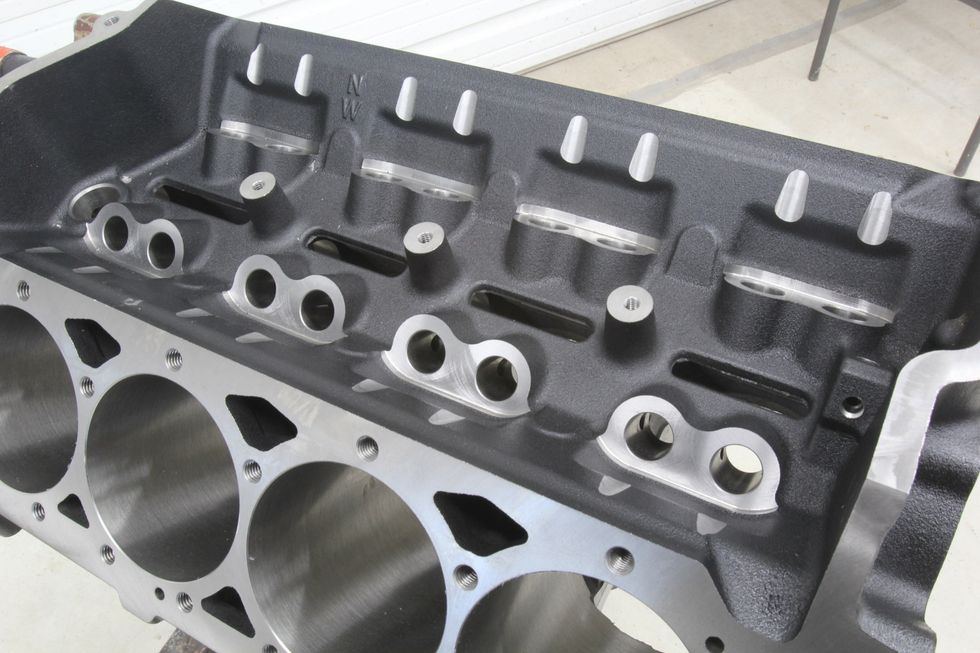
Another welcome addition is that all the blocks are fitted with provisions for a factory style hydraulic roller camshaft. Three pedestals are cast and threaded to attach the factory spider and the lifter bores are taller for use with factory hydraulic roller lifters. The camshaft height is also in the stock location so it will accept a standard single or double-roller small-bock cam drive.
These taller lifter bores do require a 0.300-inch taller roller lifter when using a mechanical or hydraulic roller, link-bar lifter and Summit notes that using these taller lifters means the heads must be removed to remove the lifters from the bores, much like an LS engine. This means that changing camshafts with taller lifters will demand removing the heads. Of course, this block can also be used with a flat tappet camshaft.

Summit’s Mike Schmidt tells us that these blocks are all machined on high-speed Makino CNC machines which not only leaves a very smooth, final surface but with computer numerical control the orientation of lifter bores to the cam centerline, among other positions, should be exceptionally accurate. Accurate valve timing would also contribute to making more power. It’s a subtle point, but this is the same approach used to build competition engines where accuracy is critical.
Another nice addition is this Summit block is machined for the factory hydraulic roller cam retention plate. If this plate is used this also demands a stepped nose style camshaft which eliminates the hassle of setting camshaft endplay clearance.

Moving to the bottom end, the block has been factory cast with reliefs in the area just above the oil pan rail to produce clearance (depending upon connecting rod design) for up to a 3.75-inch stroke. This area is cast solid so if additional clearance is needed, there are no coolant passages in this pan rail area to worry about.
To accommodate a wide variety of production block applications, the SPC block includes the stock mechanical fuel pump mount using a stock length pushrod along with the stock spin-on oil filter location. The stock three-bolt engine mounts are logically present along with three freeze plug provisions per side with two more front and rear. Keep in mind that this block will require two more brass freeze plugs compared to a standard small-block kit. In addition, you will need nine ¼-inch NPT Allen plug for all the oil galley and water jacket plugs along with a pair of 1/8-inch NPT plugs.

All these Summit blocks are machined for the later model, passenger side dip stick location which requires the same configuration oil pan. The engine is, of course, a wet sump design and is machined to accept the typical standard or high volume small-block or big-block Chevy oil pump.
The price of these blocks at the time of this writing is just north of $2,000, which might seem high to some. But considering that a machine shop will charge between $800 or more to clean, Magnaflux, deck the block to be parallel with the crank centerline, bore, torque plate hone, and align hone the mains. Add this to an initial used block cost of around $200 and you are halfway to the price of this brand new casting. Yes, you will still have to torque plate hone this new block but the quality of the machine work on the rest of block certainly adds significant value.

This new Summit SPC block may not be the first choice for the average basic engine rebuilder. But it does fill a need for the performance builder with aspirations of big horsepower numbers. Summit says this block is more than capable of reliably delivering 700+ horsepower and there are rumors of a 1,500-hp blown application that is putting the test to this new block.
There are other blocks out there that offer some or most of these same features but they do so with a much higher price. With all the excellent features, it is certainly worthy of consideration especially if your next project calls for a stroker crank and a roller cam. There are ways to maintain the budget and still built a quality engine. That notion just moved a little closer to reality with the Summit SPC block.




Summit tells us that by mid-summer, the company will be adding a big-block Chevrolet version of the SPC block, in the MK IV configuration. These blocks will be offered in 4.500 and 4.600-inch bore sizes with either two- or one-piece rear main seals. In addition, there will be a choice of a 9.800 or 10.200-inch deck heights. Like the small-block versions, these blocks will be cast in Germany and machined in the USA. A 4.600-inch bore with a 4.250-inch stroke on a standard-deck Rat motor would produce a 565ci Rat motor. At 1.25 horsepower per cubic inch, a normally aspirated, single four-barrel combination would produce just north of 700 horsepower.
All specs are in inches, unless otherwise noted.
Block material: Class 35 Iron Alloy
Block Weight: 181-194 lbs., depending upon bore size
Bore size: 3.996 or 4.120
Bore Spacing: 4.400
Maximum bore size: 4.185
Deck Height: 9.00” (+0.005 to -0.0003)
Deck thickness: 0.600
Cylinder head bolt holes: Blind
Main journal size: 350 style - 2.4485 / 400 style - 2.649
Main cap bolts: 7/16” Inner, 3/8” outer
Main cap material: Nodular iron
Clearance for 3.750-inch stroke: Yes
Cam location: Stock position
Min. cylinder wall thickness at 4.185”: 0.220”
Lifter bore size: 8.437 +/- 0.0003
Cam bearing bore size: 2.000 +/- 0.001
Lubrication system: Priority main
Machined for OEM hyd. roller lifters: Yes
Oil pan rails: Solid (no water jackets)
Starter motor bolt holes: Drilled and tapped for both straight and offset

When you invest this much into a very nice cylinder block, you want everyone to know where it comes from.
Photo: Jeff Smith
All parts in this list are sourced from Summit Racing.